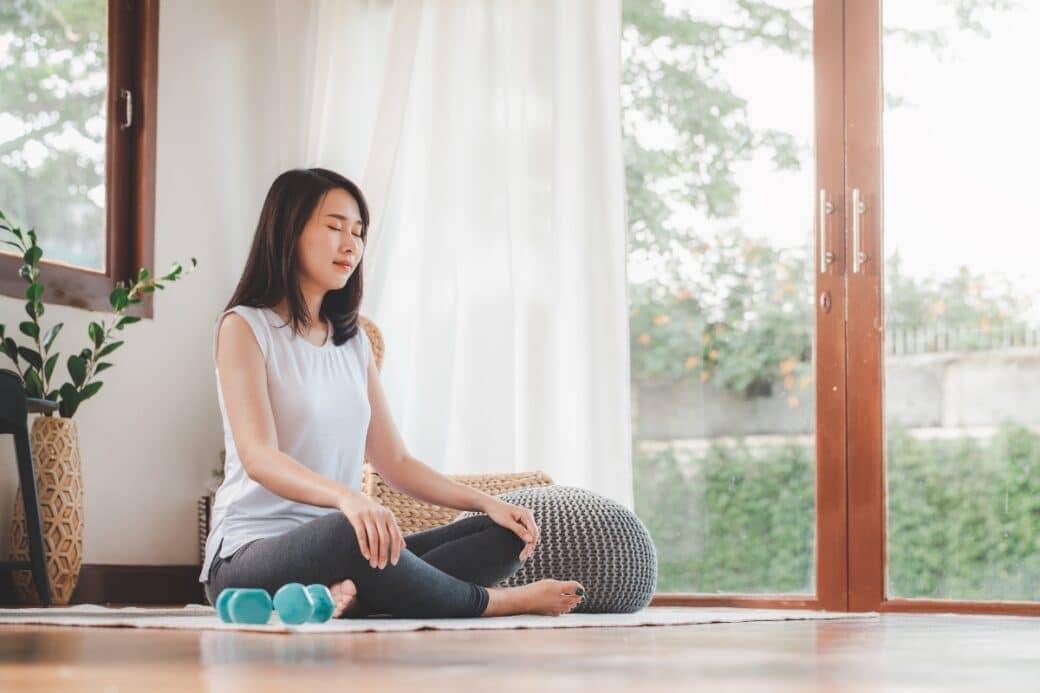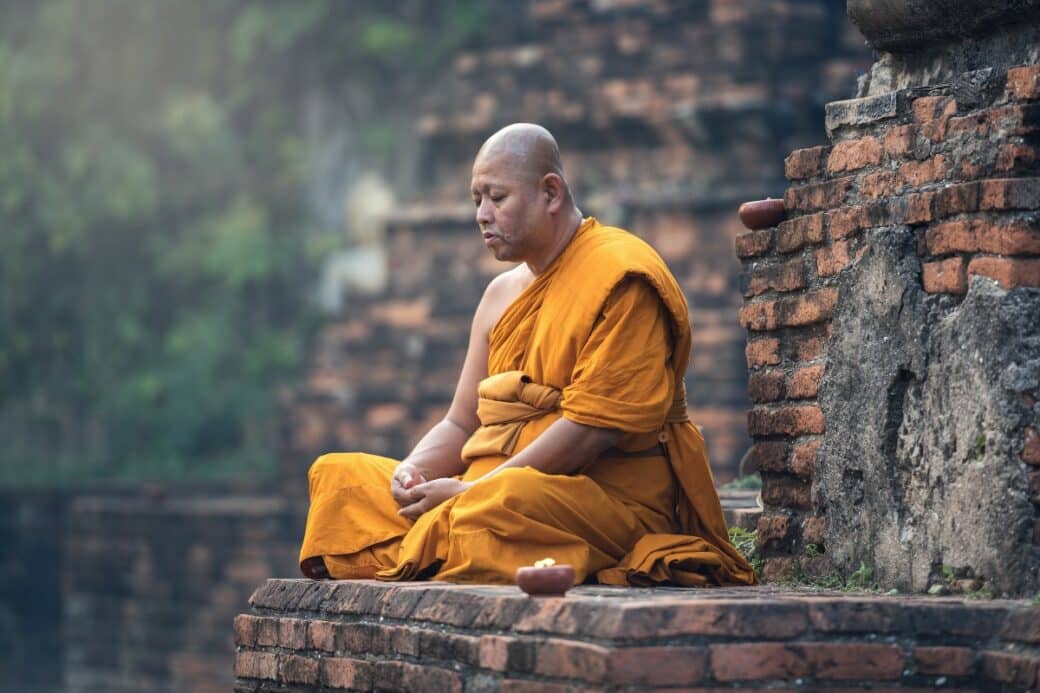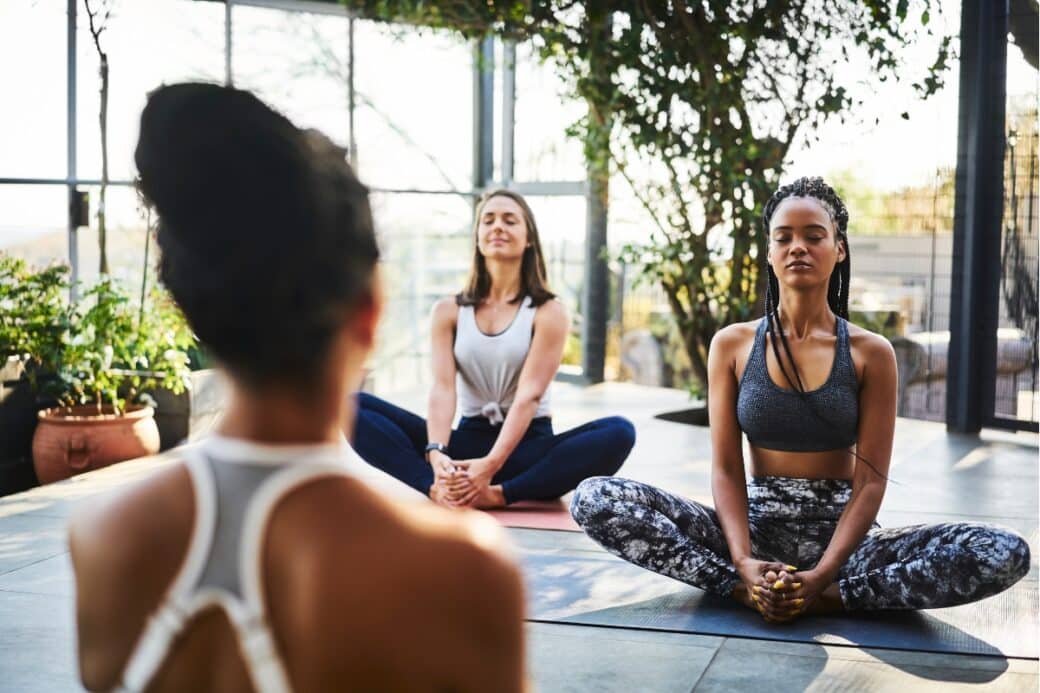Are you feeling overwhelmed, stressed, or disconnected from your inner self? If so, meditation might just be the answer you’ve been searching for. In this article, we will explore the basics of meditation and provide you with simple steps to kickstart your journey to inner peace. By taking a few minutes each day to quiet your mind and focus on the present moment, you can experience a sense of calm, clarity, and renewed sense of purpose. So, grab a cushion, find a quiet space, and let’s embark on this transformative journey together.
Understanding the Concept of Meditation
The origins and history of meditation
Meditation has a rich and diverse history that spans thousands of years. Its origins can be traced back to ancient civilizations such as India, China, and Egypt. In India, meditation practices have been documented as early as 1500 BCE in the Vedas, which are ancient Hindu scriptures. In China, meditation techniques were developed as early as the 6th century BCE, with the rise of Taoism and the teachings of Lao Tzu. In ancient Egypt, meditation was a key component of religious practices, with hieroglyphs depicting individuals in deep meditation.
Different forms/types of meditation
There are various forms and types of meditation, each with its own unique approach and focus. One of the most popular forms is mindfulness meditation, which involves bringing full attention to the present moment and observing thoughts and sensations without judgment. Transcendental meditation, on the other hand, involves the repetition of a mantra to achieve a state of deep relaxation and self-awareness. Guided meditation and body scans involve following the instructions of a guide who helps you relax and focus on specific parts of your body or specific thoughts. Lastly, loving-kindness meditation involves cultivating feelings of love, compassion, and kindness towards oneself and others.
The scientific basis and benefits of meditation
Research has shown that meditation has numerous benefits for both the mind and body. Scientific studies have found that regular meditation practice can reduce stress, anxiety, and depression. It can also improve concentration, focus, and memory. Furthermore, meditation has been found to promote emotional well-being and increase feelings of happiness and contentment. In terms of physical benefits, meditation has been associated with lower blood pressure, improved immune function, and better sleep quality. These scientific findings support the idea that meditation is an effective tool for enhancing overall well-being and achieving inner peace.
Defining Inner Peace
Understanding the concept of Inner Peace
Inner peace can be defined as a state of tranquility and harmony within oneself. It is a sense of calmness that arises when the mind is free from stress, worries, and negative thoughts. Inner peace is not about escaping from the challenges and responsibilities of life but rather about developing resilience and equanimity in the face of them. It is the ability to find a sense of balance and contentment regardless of external circumstances.
The connection between meditation and Inner Peace
Meditation is a powerful tool for cultivating inner peace. By practicing meditation, you can train your mind to become more present, focused, and aware. Through regular meditation practice, you can learn to observe your thoughts and emotions without attachment or judgment, allowing them to come and go freely. This ability to detach from the incessant chatter of the mind creates space for inner peace to arise. Meditation helps to quiet the mind, reduce stress, and bring about a sense of calmness and clarity.
The benefits of achieving Inner Peace
Attaining inner peace can have profound effects on your overall well-being. When you are at peace within yourself, you experience greater mental and emotional stability. Inner peace allows you to respond to life’s challenges with a sense of calm and resilience, rather than reacting impulsively or becoming overwhelmed. It is also closely linked to improved physical health, as stress and anxiety are known contributors to a wide range of health issues. Ultimately, cultivating inner peace through meditation can lead to a more fulfilling and meaningful life.

Preparing for Your Meditation Journey
Creating your meditation schedule
To embark on your meditation journey, it is essential to create a consistent meditation schedule. Choose a time of day when you can devote uninterrupted time to your practice. Whether it’s early morning, during a lunch break, or before bed, find a time that works best for you. Start with shorter sessions, gradually increasing the duration as you become more comfortable. By creating a regular meditation schedule, you will cultivate discipline and make meditation an integral part of your daily routine.
Choosing the right space for meditation
Selecting an appropriate space for meditation can greatly enhance your practice. Find a quiet and peaceful area where you can relax and focus without distractions. This could be a dedicated meditation room, a corner of your bedroom, or even a serene spot outdoors. Ensure that the space is clean and clutter-free, as a tidy environment can contribute to a calm and peaceful mind. Creating a sacred space for meditation can also help signal to your mind that it’s time to enter a state of deep relaxation and introspection.
Understanding the importance of comfort in meditation
Comfort is crucial when it comes to meditation. Choose a seating position that allows your spine to be erect and aligned. This can be in a chair with back support, on a meditation cushion (zafu), or on a yoga mat. Experiment with different postures to discover what feels most comfortable for you. It’s also important to wear loose and comfortable clothing that does not restrict your movements or cause discomfort. By prioritizing comfort in your meditation practice, you create the optimal conditions for relaxation and deep inner focus.
Basic Techniques in Meditation
Mindfulness meditation
Mindfulness meditation is a form of meditation that involves bringing attention to the present moment and cultivating awareness without judgment. It involves focusing on the sensations of the breath, the body, or specific thoughts. The key is to observe these experiences without getting caught up in them or reacting to them. By practicing mindfulness meditation, you develop the ability to be fully present and aware of your thoughts and emotions, allowing you to respond with clarity and compassion.
Transcendental meditation
Transcendental meditation (TM) is a technique that involves the repetition of a mantra, a specific sound or phrase. This mantra is silently repeated, allowing the mind to settle into a state of deep relaxation and self-awareness. TM is practiced for 20 minutes, twice a day, while sitting comfortably with closed eyes. The repetitive nature of the mantra helps to calm the mind and release stress, allowing the practitioner to access deeper levels of consciousness and experience inner stillness.
Guided meditation and body scan
Guided meditation involves following the instructions of a guide who leads you through the meditation practice. This can be done in person, through audio recordings, or with meditation apps. The guide provides prompts and visualizations to help you relax, focus, and cultivate specific qualities or states of mind. Body scan meditation is a type of guided meditation that involves systematically scanning the body from head to toe, bringing attention to each part, and noticing any physical sensations or areas of tension. This practice helps to cultivate body awareness and release any built-up tension or stress.
Loving-kindness meditation
Loving-kindness meditation, also known as metta meditation, involves cultivating feelings of love, compassion, and kindness towards oneself and others. It typically begins with generating feelings of love and warmth towards oneself, then gradually expands to include loved ones, neutral individuals, and even difficult people. By practicing loving-kindness meditation, you cultivate a sense of connection, empathy, and goodwill towards all beings, which can lead to a greater sense of inner peace and harmony.
Meditation Postures: Which One Suits You?
Sitting position
The sitting position is one of the most common meditation postures. It involves sitting cross-legged on the floor or on a cushion (zafu), with a straight spine and relaxed shoulders. This position allows for stability and grounding, and it is ideal for longer meditation sessions. It is important to find a comfortable height for your cushion or use additional support, such as a folded blanket, to ensure proper alignment.
Supine position
The supine position involves lying flat on your back, with your arms resting comfortably by your sides. This posture is especially useful for those who have difficulty sitting for extended periods or for those who prefer to meditate before bedtime. It allows for deep relaxation and can be helpful for releasing physical tension and promoting a sense of surrender.
The Lotus position
The Lotus position, or Padmasana, is a classic meditation posture that involves crossing your legs with each foot resting on the opposite thigh. This posture requires flexibility in the hips, knees, and ankles. The Lotus position is often associated with a sense of stability, grounding, and balance. It is commonly used in traditional meditation practices and is believed to promote a deeper level of concentration and focus.
The Half-Lotus position
The Half-Lotus position is a modified version of the Lotus position that is more accessible for individuals with less flexibility. It involves crossing one leg with the foot resting on the opposite thigh, while the other leg remains extended or bent at the knee. The Half-Lotus position provides a similar sense of stability and balance as the full Lotus position, while allowing for greater comfort and ease.
Meditation Resources: Tools to Enhance Your Practice
Meditation applications
Meditation applications, or meditation apps, are digital tools that provide guided meditations, timers, and other resources to support your meditation practice. These apps offer a wide range of meditation styles and durations, allowing you to choose what aligns best with your needs and preferences. Some popular meditation apps include Headspace, Calm, Insight Timer, and 10% Happier.
Meditative music and sounds
Meditative music and sounds can greatly enhance your meditation experience by creating a soothing and calming environment. Calming instrumental music, nature sounds, and ambient sounds can help you relax, focus, and enter a deep meditative state. Experiment with different types of music and sounds to find what resonates with you and enhances your practice.
Books and literature on meditation
There is a vast array of books and literature on meditation that can provide valuable insights and guidance on your meditation journey. From ancient spiritual texts to contemporary scientific research, these resources offer a wealth of knowledge and inspiration. Some popular meditation books include “The Power of Now” by Eckhart Tolle, “Wherever You Go, There You Are” by Jon Kabat-Zinn, and “The Miracle of Mindfulness” by Thich Nhat Hanh.
Common Challenges in Starting Meditation and their Solution
Overcoming distractions and concentration issues
One of the common challenges in meditation is dealing with distractions and difficulties in maintaining focus. The nature of the mind is to wander, and it can be challenging to keep it anchored to the present moment. However, with consistent practice, it becomes easier to train the mind and improve concentration. Utilizing techniques such as focusing on the breath, repeating a mantra, or using visualization can help bring your attention back to the present moment and overcome distractions.
Handling emotions during meditation
Emotions are an integral part of the human experience, and they can arise during meditation. It is essential to acknowledge and accept any emotions that arise without judgment or attachment. Instead of trying to suppress or push away these emotions, allow yourself to observe and experience them without getting caught up in the story behind them. Over time, this practice can help you develop emotional resilience and a greater understanding of your own mind and heart.
Dealing with physical discomfort during meditation
Physical discomfort, such as stiffness or pain, can arise during meditation, especially when maintaining a seated posture for an extended period. It is crucial to listen to your body and make any necessary adjustments to alleviate discomfort. Experiment with different meditation positions and use additional support, such as cushions or blankets, to find a position that allows for both comfort and stability. Stretching or engaging in gentle yoga poses before meditation can also help release tension and prepare the body for a more comfortable practice.
Building Consistency and Progress in Your Meditation
Setting achievable meditation goals
Setting achievable meditation goals can help you stay motivated and build consistency in your practice. Start by setting small and realistic goals, such as meditating for five minutes every day. As you establish a routine and feel more comfortable, gradually increase the duration of your meditation sessions. Remember that progress in meditation is not measured by the length of time you spend in meditation but rather by the quality of your presence and awareness.
Tracking progress with meditation journal
Keeping a meditation journal can be a powerful tool for tracking your progress and reflecting on your meditation experiences. In your journal, you can record the duration of each meditation session, any insights or observations, and any challenges or breakthroughs you may have encountered. By regularly reviewing your journal entries, you can gain a deeper understanding of your meditation practice and observe the positive changes and growth that occur over time.
Joining meditation groups and communities for motivation
Joining meditation groups or communities can provide valuable support and motivation on your meditation journey. Connecting with like-minded individuals who share your interest in meditation can enhance your practice by providing opportunities for discussion, learning, and inspiration. Whether it’s joining a local meditation group or participating in online forums and communities, the sense of belonging and camaraderie can fuel your motivation and deepen your commitment to meditation.
Incorporating Meditation into Everyday Life
Meditative walking
Meditative walking, also known as walking meditation, is a practice that involves walking slowly and mindfully while maintaining awareness of each step and the sensations in your body. It can be done in a garden, park, or any outdoor space that allows for a calm and peaceful environment. Meditative walking offers a unique opportunity to combine physical movement and meditation, allowing you to cultivate presence and mindfulness in everyday activities.
Mindful eating
Mindful eating is a practice that involves bringing full attention and awareness to the act of eating. It involves savoring each bite, observing the flavors and textures, and being fully present in the experience of nourishing your body. Mindful eating can help you develop a healthier relationship with food, make better food choices, and enhance the overall enjoyment and satisfaction of meals.
Practicing mindfulness in daily routines
Incorporating mindfulness into your daily routines is a powerful way to integrate meditation into everyday life. Whether it’s brushing your teeth, taking a shower, or engaging in household chores, you can approach these activities with full presence and awareness. By bringing mindfulness to daily routines, you create opportunities for moments of stillness and reflection throughout the day, fostering a greater sense of peace and mindfulness.
Exploring More on Meditation: Special Practices
Chakra meditation
Chakra meditation is a practice that focuses on the energy centers in the body known as chakras. Each chakra is associated with different qualities and aspects of our being. By directing your attention and energy to each chakra through visualization or specific practices, you can balance and activate these energy centers, promoting physical, mental, and emotional well-being.
Zen meditation
Zen meditation, also known as Zazen, is a form of meditation rooted in Zen Buddhism. It involves sitting in a crossed-legged posture (typically the Lotus or Half-Lotus position) and focusing on the breath or a specific point of focus. The aim of Zen meditation is to cultivate a state of complete presence and non-attachment to thoughts and sensory experiences. This practice emphasizes direct experience and is often accompanied by the guidance of a Zen teacher.
Yoga meditation
Yoga meditation combines physical postures (asanas) with breath control (pranayama) and meditation techniques. It is a holistic practice that integrates body, mind, and spirit. The physical movements in yoga help prepare the body for meditation by releasing tension and promoting flexibility. The breath control techniques help calm the mind and induce a meditative state. Yoga meditation can be practiced in various styles, such as Hatha Yoga, Kundalini Yoga, and Vinyasa Yoga, each with its emphasis and approach to meditation.
In conclusion, meditation is a powerful practice that can help you embark on a journey towards inner peace. By understanding the origins and history of meditation, exploring different forms and types of meditation, and harnessing the scientific basis and benefits of meditation, you can lay the groundwork for a meaningful and transformative meditation practice. By preparing for your meditation journey, learning basic techniques, exploring meditation postures, and utilizing meditation resources, you can create an optimal environment to enhance your practice. Overcoming common challenges and building consistency in your meditation practice will further support your progress. By incorporating meditation into everyday life and exploring special practices, such as chakra meditation, Zen meditation, and yoga meditation, you can deepen your understanding and experience of meditation. May your meditation journey be one of self-discovery, inner peace, and profound transformation.




